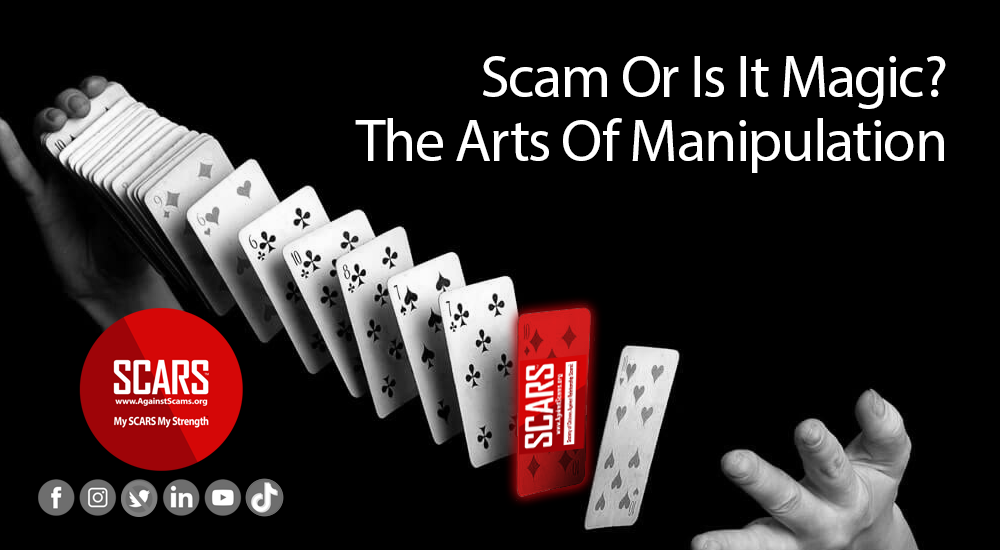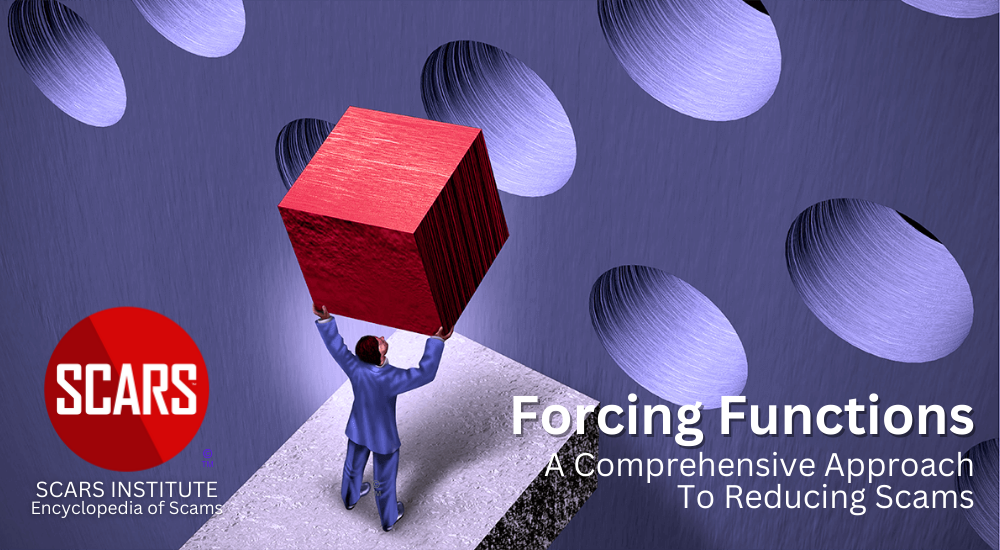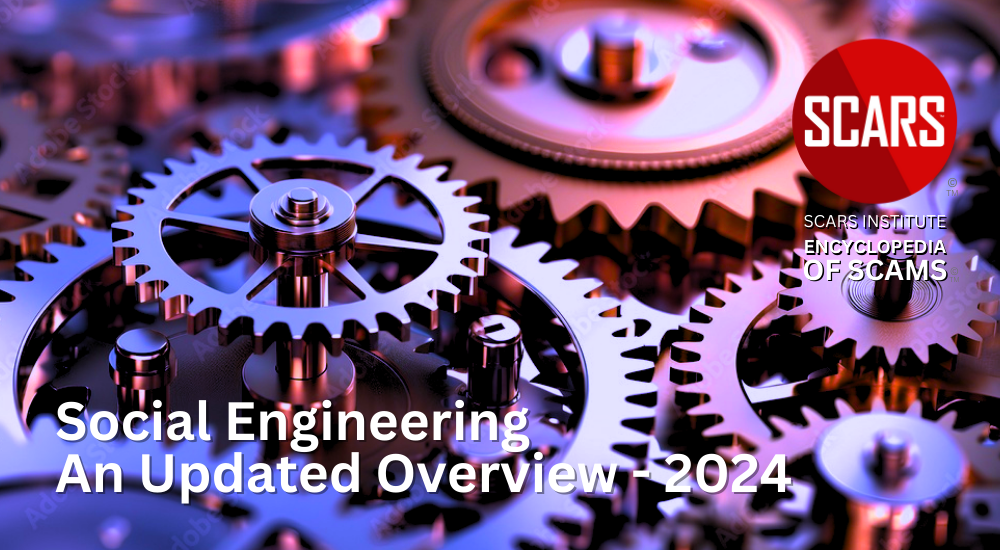Equivocation – The Magician’s Choice – The Arts Of Manipulation
Psychology Of Scams
A SCARS Insight
Many Victims Believed That They Made Their Own Choices During The Scam
They Frequently Cannot Forgive Themselves Because Of It – But In Reality, Most Of The Time The Scammer Made Or Led All The Major Decisions
Scams & Magic Have Much In Common
Scams & Magic Tricks are all about manipulation and control. The relationship is far closer than scam victims realize.
The levels of manipulation that a scammer puts their victims through can be as profound as that of an expert magician or mentalist.
YOU KNOW THERE IS NO SUCH THING AS REAL MAGIC, RIGHT?
IT IS ALL MANIPULATION AND ILLUSION!
Yet spectators to a magic show swear it was real – that it really was magic!
But it really is just skill! Skill at manipulation and illusion. Skill at forcing the spectator or audience member to do what the magician wants.
The same is true for scammers – either by training or intuitive skill, scammers have stumbled upon many of the same techniques that magicians use to control a victim in the same ways a magician controls a spectator or audience member!
Magician’s Choice is just one such technique. It is used extensively during fake videos to make the victim believe that they are making choices at specific times during the video, such as asking the person to perform some act as confirmation that they are really there, when in fact it was a prerecorded video. The scammer, like the magician, triggers a situation and forces the outcome or selection (Choice) when and where they want. However, not all scammers have the skill for this, which is why not all scammers can pull off a convincing video chat using what is really a recorded video!
This is also one of the reasons why so many victims believe the Urban Legend that they were controlled by Voodoo or JuJu magic!
Magician’s Choice
Equivocation (or “Magician’s choice” or “Equivoque”) is a verbal & visual manipulative technique by which a magician gives an audience member an apparently free choice, but frames the next stage of the trick in such a way that each choice has the same end result.
For example, the Magician may deal two cards to the table and ask a member of the audience to select one: if the audience member chooses the card on the left, the Magician will say something like “you keep this card, I’ll take the remaining card”. If the audience member chooses the card on the right, the Magician will take that card. Thus, the choice of which card to use is really made by the Magician.
These basic techniques can be expanded to include practically any number of items, such as an entire deck of cards. For larger sets, items may first be grouped, then split up. The magician must quickly and carefully craft chatter to convey the impression that the actions he or she takes with the items truly reflect the intent of the audience member.
Some Of The Techniques Used By Magicians Are
CARD FORCING: Equivocation can be used to force a card without the use of sleight of hand. The use of this kind of verbal force in close-up magic apparently offers a subject a free or random choice of card. It is not as common as sleight of hand or other methods because of its complexity and the skill required.
MENTALISM: In another use, a Mentalist may perform an apparent act of mind-reading by using the “magician’s choice” to force a particular envelope that relates to a needed outcome. A Mentalist may also force an effect from a certain outcome, as in taking something ordinary and using it to show their magical prowess.
EFFECTIVENESS: In each of these examples, the effectiveness of the equivocation (manipulation) involves the “information gap” between what the spectator knows and what the spectator thinks they know. In the Magician’s Choice (force,) the spectator does not know anything about what will happen to the two cards he initially selects. However, the spectator thinks that they are making a free choice in an otherwise scripted sequence of moves. In the effect of the prepared envelope, the spectator thinks they know that the envelope involves a prediction, but does not realize that the envelope, in fact, involves three predictions.
Equivocation tends to lose its effectiveness if repeated in the same context, since the spectator gains more information from one performance to the next, thereby shrinking the information gap. For example, a spectator may wonder why their choice was kept in some cases and discarded in others. Equivocation is a particular form of alternate ending that forces where double-entendre wording is used and a different pattern of results to questions can be noticed, but its real strength is best realized when augmented with artful psychological techniques.
The Scammer’s Use
Recognizing that scammers are far from stupid we see that the scammer uses artful manipulation to control the victim throughout the scam. From situational manipulation, such as during a prerecorded video chat and making the video believe it is real – to longer-term manipulation, making the victim believe that sending money is their own idea!
Scammers, in reality, are expert manipulators. The better a scammer is at this, the shorter the scam and the more the scammer makes!
Remember
There is only one defense against this kind of manipulation: DO NOT PLAY!
In other words, the only way to evade this level of manipulation is simply never to allow yourself to be in a situation where a scammer can take control.
It is not intelligence that avoids scams, in fact, your intelligence works against you. It is behavioral protections – stay away from the triggers and temptations that led you into the scam in the first place.
-/ 30 /-
What do you think about this?
Please share your thoughts in a comment below!
RATE THIS ARTICLE?
LEAVE A COMMENT?
Recent Comments
On Other Articles
- Nikolaus on Dating Scammers Paradise: Ivory Coast: “The Ivory Coast romance scam is still going on. It seems that local authorities don’t handle the issue effectively!” Dec 10, 02:17
- on The SCARS Institute Top 50 Celebrity Impersonation Scams – 2025: “Thank you – we will.” Dec 7, 11:41
- on The SCARS Institute Top 50 Celebrity Impersonation Scams – 2025: “You should add Sean Bean to your list of Celebrities. This one is very good, and persistent. He will be…” Dec 2, 12:07
- on How You Think & Talk About Your Scam Affects Your Recovery: “I have hung on to the scams for far too long. With the intervention of an all-merciful God, I have…” Nov 6, 22:13
- on Disengaging From A Fake Scam Relationship: “Taci, you may want to join our new support community at www.SCARScommunity.org” Nov 6, 03:01
- on Disengaging From A Fake Scam Relationship: “This particular article helped me discover the many things I did wrong the first time I was scammed. I should…” Nov 5, 22:49
- on About the SCARS RomanceScamsNOW.com Website – 24 Years Published: “It was unavailable for a few days, but it is available again. If he would be interested, he is welcome…” Nov 5, 00:59
- on About the SCARS RomanceScamsNOW.com Website – 24 Years Published: “My husband has been scammed and your classes have been helping him but now he can’t seem to access them.…” Oct 26, 14:57
- on Talia Shepard – Impersonation Victim – Stolen Photos – 2024: “Hi, I’m Patrick from Belgium and I found this site by chance, so I just got to know it, and…” Oct 17, 23:46
- on Talia Shepard – Impersonation Victim – Stolen Photos – 2024: “Hallo ik ben Patrick uit Belgie en het is in verband over PayPal. Ik heb het dit jaar spijtig genoeg…” Oct 17, 23:08
ARTICLE META
Important Information for New Scam Victims
- Please visit www.ScamVictimsSupport.org – a SCARS Website for New Scam Victims & Sextortion Victims
- Enroll in FREE SCARS Scam Survivor’s School now at www.SCARSeducation.org
- Please visit www.ScamPsychology.org – to more fully understand the psychological concepts involved in scams and scam victim recovery
If you are looking for local trauma counselors please visit counseling.AgainstScams.org or join SCARS for our counseling/therapy benefit: membership.AgainstScams.org
If you need to speak with someone now, you can dial 988 or find phone numbers for crisis hotlines all around the world here: www.opencounseling.com/suicide-hotlines
A Note About Labeling!
We often use the term ‘scam victim’ in our articles, but this is a convenience to help those searching for information in search engines like Google. It is just a convenience and has no deeper meaning. If you have come through such an experience, YOU are a Survivor! It was not your fault. You are not alone! Axios!
A Question of Trust
At the SCARS Institute, we invite you to do your own research on the topics we speak about and publish, Our team investigates the subject being discussed, especially when it comes to understanding the scam victims-survivors experience. You can do Google searches but in many cases, you will have to wade through scientific papers and studies. However, remember that biases and perspectives matter and influence the outcome. Regardless, we encourage you to explore these topics as thoroughly as you can for your own awareness.
Statement About Victim Blaming
Some of our articles discuss various aspects of victims. This is both about better understanding victims (the science of victimology) and their behaviors and psychology. This helps us to educate victims/survivors about why these crimes happened and to not blame themselves, better develop recovery programs, and to help victims avoid scams in the future. At times this may sound like blaming the victim, but it does not blame scam victims, we are simply explaining the hows and whys of the experience victims have.
These articles, about the Psychology of Scams or Victim Psychology – meaning that all humans have psychological or cognitive characteristics in common that can either be exploited or work against us – help us all to understand the unique challenges victims face before, during, and after scams, fraud, or cybercrimes. These sometimes talk about some of the vulnerabilities the scammers exploit. Victims rarely have control of them or are even aware of them, until something like a scam happens and then they can learn how their mind works and how to overcome these mechanisms.
Articles like these help victims and others understand these processes and how to help prevent them from being exploited again or to help them recover more easily by understanding their post-scam behaviors. Learn more about the Psychology of Scams at www.ScamPsychology.org
Psychology Disclaimer:
All articles about psychology and the human brain on this website are for information & education only
The information provided in this article is intended for educational and self-help purposes only and should not be construed as a substitute for professional therapy or counseling.
While any self-help techniques outlined herein may be beneficial for scam victims seeking to recover from their experience and move towards recovery, it is important to consult with a qualified mental health professional before initiating any course of action. Each individual’s experience and needs are unique, and what works for one person may not be suitable for another.
Additionally, any approach may not be appropriate for individuals with certain pre-existing mental health conditions or trauma histories. It is advisable to seek guidance from a licensed therapist or counselor who can provide personalized support, guidance, and treatment tailored to your specific needs.
If you are experiencing significant distress or emotional difficulties related to a scam or other traumatic event, please consult your doctor or mental health provider for appropriate care and support.
Also read our SCARS Institute Statement about Professional Care for Scam Victims – click here to go to our ScamsNOW.com website.


















Thank you for your comment. You may receive an email to follow up. We never share your data with marketers.